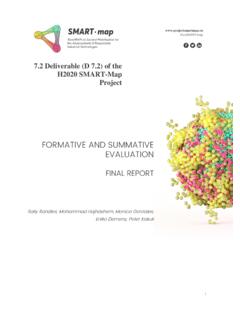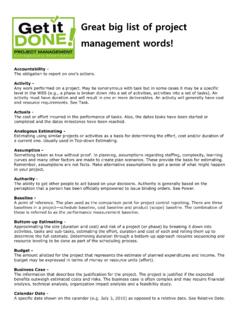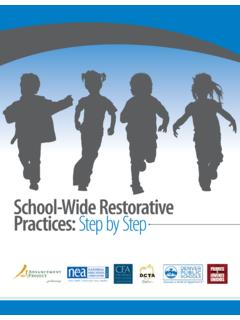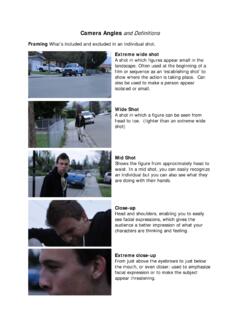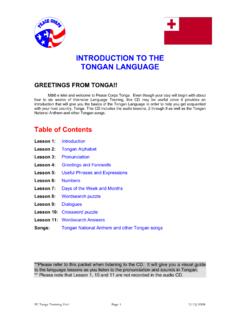Transcription of Continuing Courageous Conversations Toolkit
1 Continuing Courageous Conversations Toolkit 8/8/2017 Acknowledgments Funded by: Iowa Department of Human Services Developed by: Lisa D Aunno, JD Michelle Heinz, MSW graduate student The National Resource Center for Family Centered Practice University of Iowa School of Social Work With additional contributions by: Erin Kramer, M Ed Iowa State University Child Welfare Research and Training Project Sandy Lint, LMSW Iowa Department of Human Services Special thanks to Jolene Holden, Sue Strever, the Race: The Power of an Illusion (RPI) facilitators, and the Cultural Equity Alliance members. Their knowledge and guidance was invaluable during the development of this Toolkit .
2 Human conversation is the most ancient and easiest way to cultivate the conditions for change personal change, community and organizational change, planetary change. If we can sit together and talk about what s important to us, we begin to come alive. We share what we see, what we feel, and we listen to what others see and feel. - Margaret Wheatley (2002) Toolkit Page i Table of Contents Introductory Materials .. 1 About the Toolkit .. 1 Ground Rules for Continuing Courageous Conversations1 .. 3 Exercises .. 5 Ice Breakers .. 7 Exercises .. 11 Learning about Microaggressions .. 11 Exploring our Racial Consciousness - Racial Autobiography11 .. 15 Exploring our Racial Consciousness Race in My Life12.
3 19 The Courageous Conversation Compass13 .. 21 Understanding Privilege .. 27 Anti-Racist Bystander Intervention .. 31 Community Report Card18 .. 33 Face Test: Do I have the full picture?19 .. 35 Perspective Taking20 .. 37 Becoming Aware of Our Implicit Biases21 .. 39 Project Implicit .. 41 How to Overcome Our Biases .. 43 Stand Up and Declare Activity22 .. 45 Page ii Speed Meeting Activity23 .. 47 Incorporating a Racial Equity Lens When Facilitating Dialogues24 .. 51 Resources .. 53 Videos and Movies .. 53 Books .. 57 Web Links for More Exercises/Tools .. 59 Meeting 61 Sample Agenda for Self-Guided Facilitation .. 61 Discussion Guide for Planning Future Meetings.
4 63 Guidance for Drafting Your Group s Statement of Purpose .. 64 Continuing Courageous Conversations Meeting Sign-In Sheet Toolkit Introductory Materials Page 1 Introductory Materials About the Toolkit The purpose of the Continuing Courageous Conversations Toolkit is to provide support and tools for participants to take one or more next steps after the Race: The Power of an Illusion (RPI) learning exchange. The primary learning objective of the RPI learning exchange is to build organizational capacity to engage in ongoing Courageous Conversations about the intersections of race, equity and child welfare by: 1) Introducing key data, foundational concepts, frameworks and definitions 2) Increasing knowledge about the development of the social construct of race and how public policy has resulted in vastly unequal opportunities and disparities based on skin color 3) Increasing awareness about racial and ethnic disparities in the child welfare and juvenile justice systems 4) Introducing the concept of Courageous Conversations about race 5) Increasing participants comfort level in engaging in Courageous Conversations 6)
5 Encouraging participants to commit to take some additional action following the learning exchange The Toolkit is intended to be introduced at the RPI follow up meeting to reinforce the learning, comfort level and commitment made at the learning exchange. In addition, participants should feel free to use the tools provided in any community setting where others are willing to engage in Courageous Conversations about race. The Toolkit contains a number of group exercises designed to guide participants through a Courageous conversation that can occur within a 20- to 45-minute time frame. The table of exercises on pages 5-6 spells out the objective, time frame, and cultural competence goal of each exercise.
6 A few of the exercises call for a volunteer facilitator and some advance preparation; most do not. The exercises were selected from a variety of sources (see references) and adapted for ease of use without a trained facilitator. The Toolkit has an optional meeting format that can be followed by a volunteer facilitator (see pages 61-62). Introductory Materials Toolkit Page 2 The Toolkit also contains descriptions and links to other resources for Courageous Conversations about race, including books, videos and movies and accompanying discussion guides (see pages 57-59). Conversations about race may raise feelings of indifference, guilt, shame, and mistrust. These feelings are valid and expected, but they often result in avoiding important discussions that must occur before race inequity can be addressed.
7 The Ground Rules for Continuing Courageous Conversations are very important to review prior to engaging in any exercise in the Toolkit . The group is encouraged to read the ground rules aloud and to ask for each person s verbal agreement to abide by them. It is also a good idea to see if the group wishes to suggest any additional ground rules. Toolkit Introductory Materials Page 3 Ground Rules for Continuing Courageous Conversations1 Read aloud: Courageous Conversations are dialogues in which participants commit to engage each other with honesty, open-mindedness, and vulnerability; to listen deeply to better understand each other s perspective; and to sustain the conversation when it gets uncomfortable or diverted 2.
8 The goal of Ground Rules for Continuing Courageous Conversations is to be able to have a conversation about race without excessive fear of being labeled racist, biased or bigoted, to avoid blaming or being blamed, and to avoid discounting or invalidating the experiences and feelings of others. To that end, we agree to follow these ground rules: Stay Engaged Give yourself permission to focus fully on the conversation topic or exercise at hand. Please silence your cell phone. Share a story, state your opinion, ask a question risk and grow! Speak Your Truth Value everyone s thoughts. Start by assuming good intentions. Speak from your own experience and use I statements, as in I think , I feel , I believe , or I want.
9 3 It s important that we create a safe environment where everyone is free to speak openly. Keep in mind that people are in different places in this work. In order for us to grow, people need to be able to share thoughts in a way that s comfortable for them. Be aware of non-verbal communication. Before speaking, think about what you want others to know. How can they best hear you? Mistakes are part of success. Don t be overly cautious about being politically correct this is a learning process. Disagree respectfully. Listen for Understanding Listen without thinking about how you are going to respond. Try to understand where another person is coming from as best you can.
10 Be careful not to compare your experiences with another person s. This often invalidates or minimizes a person s experiences. If someone is pointing out how what you said left them feeling, try not to explain or rationalize what you said or why you said it. Sometimes positive intent is not enough. Sometimes it s necessary to just say, I didn t realize what I said was hurt you in that way, I m sorry, etc. Be comfortable with being uncomfortable. Introductory Materials Toolkit Page 4 Honor Confidentiality What is shared here, stays here. Expect and Accept Non-closure Engaging in race Conversations is ongoing work that does not necessarily leave a person walking away feeling everything turned out the way they hoped.
